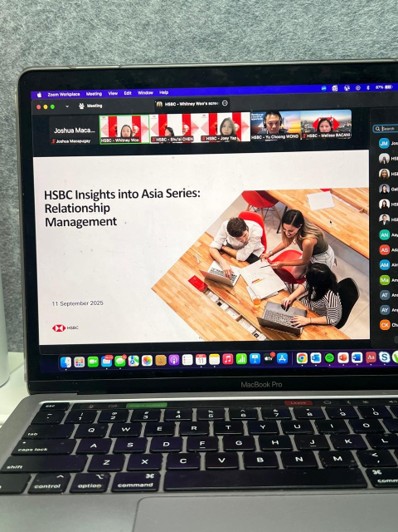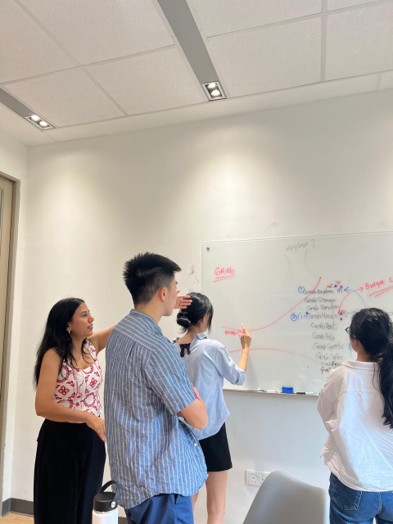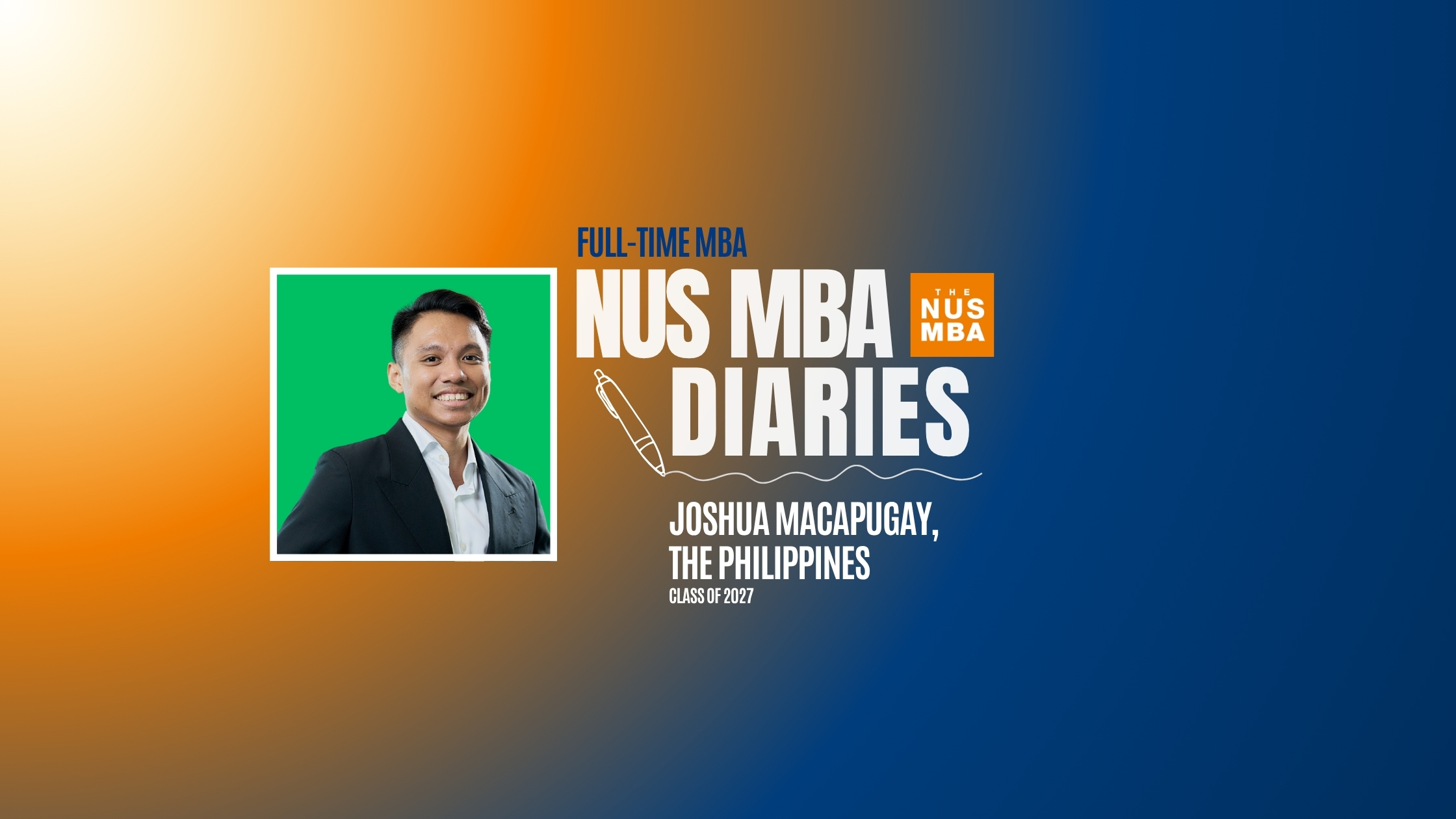The NUS MBA Diaries: Life Through Joshua Macapugay’s Lens

Myth vs Reality: What My First Two Months at the NUS MBA Taught Me About Careers
I arrived a storyteller from tech and communications; I found a campus that let me explore like a builder. From a VC fireside to banking pathways, consulting drills, and company roadshows, the NUS MBA let me try real paths, not just imagine them.
Two months ago I started writing the chapter of my NUS MBA; since then, the program has been filling the pages faster than I can turn them. My career development journey keeps bringing me back to a lesson from our Managerial Operations class: if you want a break through, apply design thinking. You have to start wide, experiment freely, and resist the urge to shoot down ideas—then narrow the focus, optimize what works, and double down on what matters.
This lesson on design thinking was something that I applied on my first two months of the MBA. After doing marketing and communications for the last 8 years, I started venturing out of my comfort zone and into the great wild west of career opportunities. Thankfully – the NUS MBA has been a compass that allowed me to explore new frontiers like Venture Capital, Finance, Consulting and into the familiar with Consumer Packaged Goods and Tech.
Myth 1 (VC): Startups are just unicorns and vibes.
Reality: Investability is a discipline.
A fireside chat with Joe Zhang—who shared his pivot from the NUS MBA into venture capital and the milestones on his path to partnership—reframed Southeast Asia’s startup scene beyond headline unicorns. I followed the curiosity into Startup Wars, a TNB Aura–sponsored VC case competition. My team didn’t advance, but the reps were gold: dissecting unit economics, stress-testing models, and building a simple rubric for “investability” that filters pitch-deck poetry from compounding logic. Exploration works best when it’s structured.
Myth 2 (Finance): Finance is only for spreadsheet people.
Reality: It’s also relationships, judgment, and timing.
I signed up for the HSBC Career Pathways virtual talk and networking session after spotting it on the NUS TalentConnect portal—purely as a first-hand test. I’ve never envisioned myself in finance; I’ve built a career in storytelling, not “calculator work.” The session demystified the space. Through conversations with both new and experienced bankers, I got a look behind the scenes of Private Wealth—how trust and sequencing matter when advising clients—and a clearer view of how investment bankers function within the bank in Singapore. Beneath the models sit relationships, timing, and judgment. The fundamentals gap I need to close feels very bridgeable.

Myth 3 (Consulting): Consulting is all puzzles and trick questions.
Reality: It’s structured problem-solving—fast.
My curiosity about consulting started back at Grab, where many of my mentors—heads of operations, marketplace, strategy, and even our country manager—were ex-consultants from McKinsey and Accenture. At NUS, BizCareers ran two talks that put scaffolding around that interest: one with seasoned folks from BCG, McKinsey, and Mastercard about career paths, and another on how to approach casing. I’d done case studies when pivoting into tech after my agency stint, but formal casing was new. Learning to structure thoughts, break down problems, form hypotheses, and develop detailed answers felt like sharpening tools I already had—now it’s about reps and precision.
Myth 4 (Tech): Non-engineers can’t lead in tech.
Reality: Product sense + customer insight + shipped outcomes win.
A “career acceleration in tech” session with Vincent Xu (TalentGeist) mapped his pivot from private equity into strategy and product marketing at Google. That story quieted a fear I didn’t realize I was carrying: that leadership in tech requires code. What it actually requires is clarity—of problem, priorities, and outcomes—paired with the discipline to ship. As someone from a non-engineering background who’s been tech-adjacent at Grab, Vincent’s pivot widened my map instead of shrinking it.
Myth 5 (CPG): Brand marketing is just ads.
Reality: It’s a mini-GM role with P&L levers.
At the NUS × P&G roadshow, the team showcased opportunities across HR, Finance, and Brand Marketing. Having worked with P&G early in my agency-side years, it felt like peeking inside the house I used to get briefs from. Brand management appeals because it’s a “mini-GM” role—distribution, advertising, budgets, pricing—like running a small business. P&G’s legacy as the birthplace of modern brand management in the 1930s is disciplined creativity at scale. (The free shampoo and soaps didn’t hurt either.)

Myth 6 (Product): If you’re good at launching, you don’t need to build.
Reality: Building reshapes how you launch.
The INSEAD × Grab Product Games briefing for 2025 (which NUS won last year) flipped my old muscle memory. At Grab, in product marketing and communications, products usually landed on my lap—my job was to launch, grow, and scale them to millions of users in the Philippines. This time we had to think like PMs: find a new market opportunity and design a net-new vertical. Moving from amplification to creation fused both halves of my career—the storyteller who rallies momentum and the builder who makes something worth rallying around.

From Exploration to Evidence
Exploration only started to matter once it showed up in how I work. I began with the basics: I dusted off my CV from my b-school applications and ran it through VMock – an AI tool made available to us by the Bizcareers office. Three passes later, it finally matched the story I’m telling now. A coaching session with BizCareers—thank you, Linda—turned that momentum into a simple loop I can actually run: explore, learn, focus. Having a cadence changed everything.
With that rhythm in place, the map widened. I opened my search to Singapore, Hong Kong, Japan, and across ASEAN, saying yes to conversations and assessments as they came—from finance to tech, consulting to CPG. Each touchpoint forced clarity: what energized me, what I needed to learn next, and which direction deserved another step.
I kept the engine humming with a steady casing routine on CaseCoach and peer mocks, targeted applications through BizCareers, TalentConnect, and LinkedIn, and quick follow-ups that turn chats into next steps. One by one, these pieces are becoming more than activity—they’re evidence that the path I’m choosing is the one I can deliver on.
Looking Ahead
I came to NUS ready to test—and found a place that lets you do it with intention. Two months in, the design-thinking loop still holds: start wide, learn fast, narrow with care, and double down where skill, purpose, and joy overlap. What surprises me most is not how many doors opened, but how clearly the right ones now stand out.
The next chapter won’t be a straight line; it will be a series of deliberate bets—on people, on problems worth solving, and on work that compounds. If there’s one lesson I’m taking forward, it’s this: exploration isn’t the opposite of commitment. It’s how you earn it.


